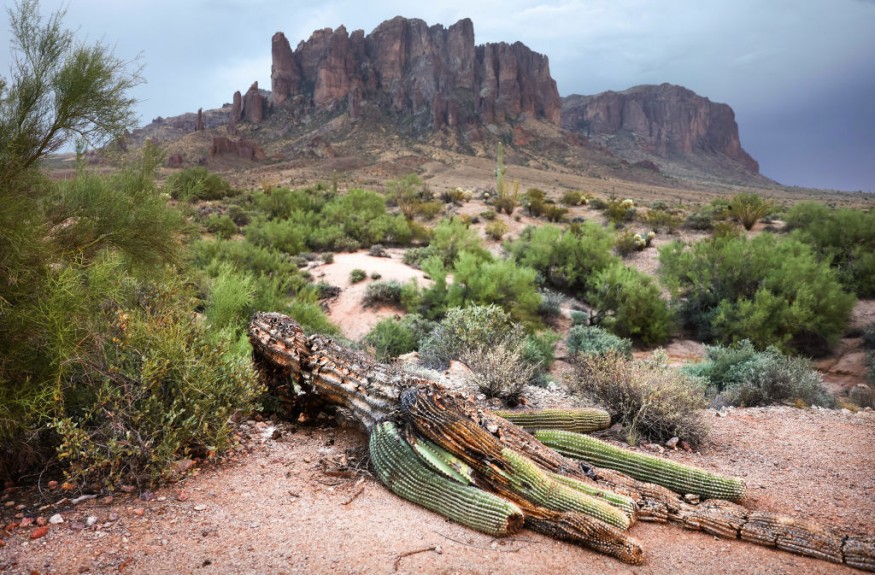
The 36-foot-tall Saguaro cactus was toppled due to its weight, the wind, and the rain, according to the Arizona State Park, and not extreme heat -at least for this case.
36-Foot Giant Saguaro Cactus
In Arizona's Picacho Peak State Park, a massive cactus that probably existed before the Civil War has fallen, prompting speculation on whether this was a result of the Southwest experiencing record heat. According to reports on August 12th, the saguaro cactus was located along the challenging Calloway Trail. The only known information was that its fall was recent, while the exact date was not identified, according to representatives of Arizona State Parks.
According to officials, the cactus was roughly 150-175 years old and measured 36 feet tall after a site investigation. Saguaros are roughly 200 years old and are regarded as fully mature when they reach a height of 40 feet.
One of the species that gives the Sonoran Desert its character is the saguaro cactus (Carnegiea gigantea).
These plants are huge, tree-like columnar cacti, some of which never sprout arms or branches as they age. There may be over 25 of these arms, which often curve upward. Protective spines cover Saguaros, like typical cacti, are covered with protective spines. Good environmental conditions would help the plant have white blooms in the late spring and red fruit in the summer.
Saguaros can only be found in the Sonoran Desert, where temperature and water are the two key factors that influence growth. The saguaro can be killed by frost and cold weather if the height is too high. Although both summer and winter rains occur in the Sonoran Desert, it is believed that the Saguaro receives the majority of its moisture throughout the summer rainy season.
Weight, Wind, and Rain
It was felled by the weather, officials say, but it was mostly to do with wind and rain than the excessive heat. The state park confirmed that although there is a lot of talk about saguaros falling due to the heat, that is not the case for this specimen. According to officials, it is highly likely that the cactus was engorged with rain when it collapsed because a well-fed saguaro may weigh up to 4,800 pounds.
According to the state park's statement, the saguaro clearly fell because of the wind and its weight.
It is situated on a steep hill and has a clean break at its base. This saguaro was probably heavy and hydrated when the strong winds swept across the area because Picacho Peak just received some rain. The once-dominant monster is now shriveling in the sun and serving as food sustenance for rodents, insects, reptiles, and microbes found in the desert.
Some Saguaros Fall to Extreme Heat
According to a study published in 2022, 90% of all species are at risk of extinction due to climate change, making cacti one of the most vulnerable categories of animals on Earth.
These cactus want less heat and more water for relief, which is not all that dissimilar from what people require. Without a monsoon season during the time of publication, the situation for cacti may be catastrophic both during the current hot wave in 2023 and in a future heat wave. The saguaros may continue to be driven toward both arm loss and total collapse if a subsequent summer of excessive heat is added to a challenging 2023 and difficult 2020.
© 2025 NatureWorldNews.com All rights reserved. Do not reproduce without permission.





